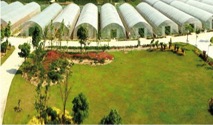January 5, 2016

On the Big Island, the Waimea Nui Hawaiian Homesteaders are beginning to build a food and energy self-sufficient sustainable community with the creation of the Waimea Nui Community Development Initiative (WNCDI).
The WNCDI is led by the Homesteaders, but built to support the entire community. The purpose is to create the fundamental infrastructure needed to build a sustainable, self-sufficient community grounded in traditional Hawaiian values.

The Waimea Nui Region covers in excess of 27,000 acres of Homestead Lands, on which 536 leases have been awarded. The homestead is part of the Waimea Community - a population of about 14,000 people, of which roughly 40% are of Hawaiian descent.
The Waimea region is home to a diverse population, and is known for its history of ranches and a tightly knit community. Today, the community includes Parker Ranch headquarters, the Keck and Canada France observatory stations, Hawai'i Preparatory Academy, Lalimilo Farms, and many other organizations that provide for a rich and varied community.
The Hawaiian Home Lands trust was created in 1921 when the U.S. Congress set aside 200,000 acres for the “rehabilitation of Native Hawaiians” through homestead, agricultural and pastoral leases. The Waimea Nui Region includes approximately 27,000 acres of lands, which are a part of the Hawaiian Home Lands trust.
Waimea Hawaiian Homestead Association represents 536 lessee families (residential, pastoral and agricultural) in the Waimea Nui region. The families in this region have inherited a long history of sustainable agriculture going back centuries. When Captain Cook first visited the island, his quartermaster made many notes of the produce supplied by the farmers in Waimea. The region was home to Kamehameha the Great, and the unification of the Kingdom of Hawai'i began in Waimea.
Over the last few decades, the region has lost two-thirds of its farmers, largely due to an inability to compete with large mainland farms. The farmers deal with energy, fuel and fertilizer costs that have been as high as 400% greater than their mainland counterparts.
Dependence on imports has brought the region to a point where there are less than two weeks of food reserves on the island at any given time, and the farms only produce enough to supply 20% of the population. The WNCDI is a comprehensive program designed to restore self-sufficiency while also building a foundation of education, health and wellness, economic stability, cultural creativity, and community inclusiveness to create a truly sustainable region.
The first step in the program began in 2013 with the establishment of a “farming for the working class/veteran-to-farmer” program. This program has been certified by the University of Hawai'i - Hilo as an 18-credit hands-on learning certificate.
Since its inception, the program has received over $600,000 in private and public funding, and has established 35 greenhouse-based farms on the homestead, with another seven families in training beginning in 2016. To support the growth of these new farms, the Waimea Hawaiian Homestead Association, a 501(c)3 organization, recently began operations on a farmers market that focuses on local produce from local farms. The grand opening of the market in November of 2015 saw more than 10 graduates of the Farming for the Working Class program selling their produce, with more farmers joining each week.
The next phase of the WNCDI began with the award of a 161 acre lease from the Department of Hawaiian Homelands to support the development of the facilities that will enable the many programs envisioned to be created over the next 10-15 years.
The first facility is the Community Agriculture Park, which has been awarded $3.5M in Capital Improvement Program funding by the Hawai'i legislature. This facility will provide small-farm training opportunities to as many as 300 residents of the Waimea/Kohala region, and builds off the same program that has been so successful on the homestead agriculture leases. The facility will begin construction in mid-2016, and will soon be opening up memberships to allow any interested resident to come join in the growing farming movement.
The WNCDI has been fortunate to have many partners, and is moving forward with the development of next-phase facilities. These include a food safety-certified agriculture processing facility, commercial scale community kitchen, a renewable energy-based independent micro-grid to support all the planned facilities, an education center to host collegiate opportunities through graduate level, an equestrian center/community fair grounds, and a health/wellness clinic.
Future plans include a Hawaiian Cultural Center, a fitness facility, community center, athletic parks, walking trails and many other facilities to support the Waimea community. The WNCDI will be fossil fuel-free from its first day of operation, not just for electric power, but for all the equipment and vehicles operated by the facilities. The goal is to enable the Waimea region to be able to produce all the food and energy it needs.
The WNCDI team looks forward to hearing from anyone interested in farming and renewable energy, and will be holding open houses in the near future. More information can be found here.

